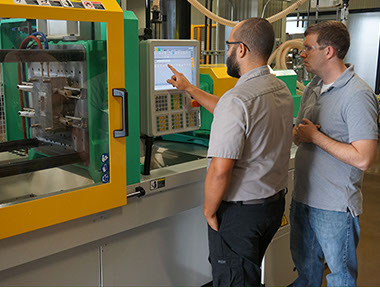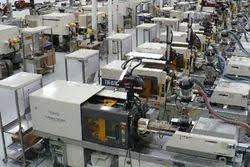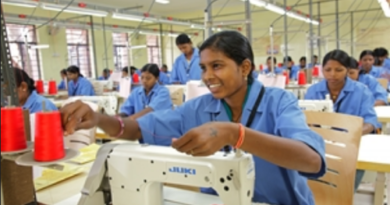Free Plastic Molding Shop Supervisor Course (6Months)
Plastic Molding Shop Supervisor click here
Plastic Molding Shop Supervisor:
Brief Job Description
This role is responsible for supervising the PVC molding and extrusion activities to create well-formed PVC parts for automobile components, maintaining process parameters, conducting quality checks on output product

deploying manpower as per requirement, guiding operatives and technicians to complete the assigned task, maintaining a safe & healthy working environment on the shop floor and maintaining records related to production, rejections, material movement and manpower productivity for a line/shift.
Personal Attributes

Reading, writing and communication skills, ability to plan and prioritize, quality consciousness, analytical thinking, sensitivity to problem solving, quick decision making, safety orientation, dexterity and high precision,
ability to use internal ERP systems ( if existing), managing teams, grievance management, listening skills, ability to train team members.

Maintain a safe and healthy working environment:
Elements and Performance Criteria
Identify and report the risks identified
To be competent, the user/individual on the job must be able to:
PC1.. Identify activities which can cause potential injury through sharp objects, burns, fall, electricity, gas leakages, radiation, poisonous fumes, chemicals ,loud noise
PC2. Inform the concerned authorities about the potential risks identified in the processes, workplace area/ layout, materials used etc
PC3. Inform the concerned authorities about machine breakdowns, damages which can potentially harm man/ machine during operations
PC4. Create awareness amongst other by sharing information on the identified risks
Create and sustain a Safe, clean and environment friendly work place
To be competent, the user/individual on the job must be able to:
PC5.. Follow the instructions given on the equipment manual describing the operating process of the equipment’s
PC6.. Follow the Safety, Health and Environment related practices developed by the organization
PC7. Operate the machine using the recommended Personal Protective Equipment’s (PPE)
PC8. . Maintain a clean and safe working environment near the work place and ensure there is no spillage of chemicals, production waste, oil, solvents etc
PC9. Maintain high standards of personal hygiene at the work place
PC10. Ensure that the waste disposal is done in the designated area and manner as per organization SOP.
PC11. Inform appropriately the medical officer/ HR in case of self or an employees illness of contagious nature so that preventive actions can be planned for others
Knowledge and Understanding (KU)
The individual on the job needs to know and understand:
KU1. relevant standards, procedures and policies related to Health, Safety and Environment followed in the company
KU2. basic knowledge of Safety procedures( fire fighting, first aid) within the organization
KU3. knowledge of various types of PPEs and their usage
KU4. basic knowledge of risks/hazards associated with each occupation in the organization
KU5. how to safely operate various tools and machines and risks associated with the tools/ equipment
KU6. knowledge of personal hygiene and how an individual an contribute towards creating a highly safe and clean working environment
Generic Skills (GS)
User/individual on the job needs to know how to:
GS1. write basic level notes and observations
GS2. read safety instructions put up across the plant premises
GS3. read safety precautions mentioned in equipment manuals and panels to understand the potential risks associated
GS4. effectively communicate information to team members
GS5. inform employees in the plant and concerned functions about events, incidents & potential risks observed related to Safety, Health and Environment.
GS6. question operator/ supervisor in order to understand the safety related issues
GS7. attentively listen with full attention and comprehend the information given by the speaker during safety drills and training programs
GS8. use common sense and make judgments during day to day basis
GS9. use reasoning skills to identify and resolve basic problems
GS10. use common sense and make judgments during day to day basis
GS11. use reasoning skills to identify and resolve basic problems

Understanding process requirements:
Elements and Performance Criteria
Understanding all the requisite processes in detail and ensuring implementation
To be competent, the user/individual on the job must be able to:
PC1. display detailed understanding of all the requisite processes to be adopted for completing the work order through reading the process manuals/ work instructions/standard operating procedures for the production job
PC2.. share knowledge of processes , inputs and outputs with the operators to enhance their skill levels
PC3. ensure the various SOW/WI created by the master technician are displayed and understood at each and every work station
PC4.. maintain work flow by monitoring steps of the processes, setting variables, observing control points and equipment
PC5. support in defining detailed processes for each step and line
PC6.. monitor various process parameters on a regular basis and ensure compliance to agreed standards (e.g. ambient air quality, stack monitoring, water quality monitoring etc.)
PC7. ensuring recording and reporting procedures and systems are in place
PC8. facilitating corrections to malfunctions within process control points
PC9. ensure 5s implementation in the production line by analyzing possible areas of systems and process improvements and ensure implementation of the recommended measures to address the gaps
PC10.. ensure successful implementation of the completed poker yoke and kaizen on the running line
Data Analysis
To be competent, the user/individual on the job must be able to:
PC11. ensure compilation of data of breakdown maintenance and reporting the same to the maintenance team
PC12.. conduct random sampling on the incoming quality of material and provide the relevant feedback on the same to the store
PC13. conduct random sampling of the process parameters and wipe products and provide necessary feedback to the line leaders
PC14. conduct random sampling of the finished goods and provide the necessary feedback
PC15. conduct batch wise product quality check in order to ensure that the quality of the product produced meet customer requirements
Support and provide basic level of inputs for process improvement initiatives
To be competent, the user/individual on the job must be able to:
PC16. support in ensuring optimum resource utilization and wastage reduction through process improvements, Kaizens, TQM, Poka Yoke etc.
PC17.. support and provide inputs on analysis of breakdown trends and current maintenance process to identify areas for improvement to achieve costsavings and reduce breakdown timing
PC18. identify areas of improvement in the existing processes/systems and take counter measures to adhere to the identified kaizens
PC19.. support the master technician in sharing inputs from the line for various poka yoke , kaizen activities
PC20. encourage team members/ operators to suggest quality improvement measures through suggestion schemes, evaluate feasibility of the ideasand discuss their implementation with seniors
PC21.. support in analyzing internal & external rejection data, planning and ensuring implementation of the corrective measures
Knowledge and Understanding (KU)
The individual on the job needs to know and understand:
KU1. relevant manufacturing standards and procedures followed in the company in detail
KU2. different types of products manufactured by the company
KU3. knowledge of functional processes like Procurement, Store management, inventory management, quality management and key contact points forquery resolution
KU4. quality norms and standards prescribed in the Quality Manual by the organization for painting
KU5. 5S and Safety norms practiced in the organization
KU6. different types of manufacturing processes used
KU7. requirement of raw materials used in the process
KU8. tools, jigs and fixtures , their usage and maintenance methods
KU9. how to operate the machine in both, automatic and manual mode
KU10. using engineering drawings, sketches, control plan and work instructions in the plant
KU11. usage of various measurement tools like Vernier Calipers, Micro metres, rulers, scales, weighing machines etc
KU12. different types of defects which may arise due to improper manufacturing and the impact of the defect on product performance
KU13. metallurgical and chemical properties of material involved
KU14. about the hazards involved in the process operations and usage of PPEs
KU15. about handling of electrical equipment and circuits, rectifiers and control panel etc.
KU16. how to measure the correct specifications of the output in the terms of thickness, hardness, durability, tightness, finesse etc.
KU17. various problems solving tools like 7QC, Why Why Analysis, Brain storming etc.
KU18. basic Arithmetic and calculation methods
KU19. key areas of power consumption/ steam consumption, compressed air consumption etc.
KU20. Various data entry tools and formats used in the organization
KU21. ability to visualize the final product output and hence decide on the key steps and parameters to be followed
KU22. about the various hazards related to various chemicals if used in the processes
Generic Skills (GS)
User/individual on the job needs to know how to:
GS1. document information from the manuals, discussion notes, process charts etc.
GS2. create small notes/ work documents/ diagrams for operators and helpers to help them understand the process
GS3. write inter departmental notes/ memos or make suitable entries in the online system
GS4. read equipment manuals and process documents to understand the equipment and processes better
GS5. read internal information memos send by internal customers ( other functions within the organization)
GS6. discuss task lists, schedules, and work-loads with the operative team members
GS7. answer the queries raised by the operative team as well asinter company departments
GS8. effectively communicate with the operators and helpers and make them aware of work expectations, targets, policies, processes etc
GS9. attentively listen with full attention the queries and grievances raised by the operative team and comprehend the information given by the speaker
GS10. communicate effectively to the team members
GS11. identify conflicts in the team and try to resolve them at the earliest
GS12. interact and engage with the team members on a day to day basis
GS13. counsel and coach the operators and help them resolve issues
GS14. timely highlight to the management about any good work/ achievement
GS15. break the problem into smaller issues and tasks to arrive at a solution by the operators and helpers
GS16. understand inter process relationship and establish relationship between various parts of the problem
GS17. leverage experience to find effective solutions to problems
GS18. use basic analytical tools to arrive at solutions
GS19. plan, organize and prioritize the work order and jobs received from the production manager
GS20. manage the schedule plan for the operators and helpers on the line/shift
GS21. validate all process/ equipment manuals so that the final process selected is correct
GS22. organize information, tools, manuals etc. on the shop floor so that sorting becomes easy
GS23. reorganize resources on the line/ shift in case of change of plans
GS24. use common sense and make judgments during day to day basis
GS25. use reasoning skills to identify and resolve problems
GS26. use intuition to detect any potential problems which could arise during operations
GS27. accept additional responsibility for self and the team
GS28. encourage self and other to take greater responsibilities
GS29. ensure that the work allocated to the team is completed as per timelines and quality norms
GS30. identify obstacles and bottlenecks in the process and on own find basic level solutions for removing these obstacles
GS31. motivate and provide support for the team on the shop floor
GS32. encourage collaboration between team members
GS33. resolve team issues and grievances to manage conflicts within the team
GS34. create an environment of approachability, trust and openness within the team
GS35. ensure role clarity for all operators and helpers on the line/ shift
GS36. escalate any team related issues to the concerned person at the right time
GS37. identify defective parts in the manufacturing line by comparing
GS38. manufactured pieces with the work standard
GS39. link the defect observed with the overall impact on the performance of the component/ automobile
GS40. support and contribute in monitoring and delivering high quality output from self and others
GS41. train team members on maintaining quality standards set by the organization
GS42. use previous experience in resolving problems and taking decisions
GS43. make timely and independent decisions on the line/ shift within the boundaries of the delegation matrix of the organization

Manage production related operations of the a shift/line on a day to day basis:
Elements and Performance Criteria
Manpower Management
To be competent, the user/individual on the job must be able to:
PC1.. undertake effective shift planning based on manpower allocation and shift handling of place right manpower on the right workstation in coordination with Production In-charge to achieve production targets
PC2.. support Shift In Charge/ Process head/ Shop head is finalizing the shift rosters for the week and month based on the production plan available
Material Management
To be competent, the user/individual on the job must be able to:
PC3. send inventory requirements to Stores and Purchase department and follow up with stores and purchase to ensure timely receipt of material (Spares, Consumables)
PC4.. ensure that the material and work piece movement on the shop floor conforms to the TAT time prescribed in the sop/ work plans so that production targets are met for the line/ shift
Supervise Production Operations
To be competent, the user/individual on the job must be able to:
PC5. support the in charge/ shop head in fulfilment of the production plan for the shop in a given line/ shift
PC6. coordinate with various functions like material management, stores, paint shop, assembly line, quality, safety, production planning etc to ensure communication of required information and resolution of queries
PC7. responsible for end of line inspection under supervision
PC8. ensure that the operators and helpers have the required tools and equipment at the start of the process
PC9. facilitate the production runs along with engineering and quality function
PC10.. ensure optimal resource utilization(man , machine and material) and streamlining of activities within the shift
PC11. identify & implement action steps to reduce losses and wastages during shift operation and ensure minimum rejection of components
PC12.. prepare daily and monthly production mist reports to match actual performance vis–vis the targets and report the same to production in-chart
PC13.. verify the production and material movement related data entries in the system ( manual/ ERP) for the line/ shift and ensure correctness of the data
PC14. support the in charge/ engineer/ shop head in analyzing the various data sheets related to production, maintenance, manpower deployment etc
PC15. support the maintenance team in finalizing the preventive maintenance schedule for the shop/ line
PC16. . support the maintenance function to ensure execution of the maintenance schedules
PC17. ensure shift handover to the next shift supervisor
PC18. Observe and note the consumption of energy, fuel, steam on the production line and support the engineer in optimization of utilization of factors of production
PC19.. ensure that the operator and helper are using the required personal protective equipment like goggles, masks, gloves and other ppes at the time of conducting the painting operation
Conformance To Product AndProcess Quality
To be competent, the user/individual on the job must be able to:
PC20.. conduct incoming quality inspection of material and provide the relevant feedback on the same to the store
PC21. conduct quality inspection of the process parameters, lab parameters and wip products and provide necessary feedback to the line leaders
PC22. conduct quality inspection of the finished goods and provide the necessary feedback
PC23. conduct quality inspection of the first sample/batch to ensure that the quality of the product produced meet customer requirements
PC24. conduct inspection and analysis of the defects observed in the process and products
Implementation Of Initiatives
To be competent, the user/individual on the job must be able to:
PC25. take overall responsibility to ensure adherence to safety standards by all employees and establish zero accident practice in the section
PC26.. implement various business excellence techniques like kaizen, 5s initiatives
Knowledge and Understanding (KU)
The individual on the job needs to know and understand:
KU1. relevant manufacturing standards and procedures followed in the company in detail
KU2. different types of products manufactured by the company
KU3. knowledge of functional processes like Procurement, Store management, inventory management, quality management and key contact points for query resolution
KU4. quality norms and standards prescribed in the Quality Manual by the organization for painting
KU5. 5S and Safety norms practiced in the organization
KU6. different types of manufacturing processes
KU7. requirement of raw materials used in the process
KU8. about tools, jigs and fixtures , their usage and maintenance
KU9. how to operate both in automatic and manual mode
KU10. about the various hazards related to various chemicals if used in the processes
KU11. different types of defects which may arise due to improper manufacturing
KU12. basic Arithmetic and calculation methods
KU13. ability to visualize the final product output and hence decide on the key steps to be followed
KU14. about the hazards involved in the process operations
KU15. about handling of electrical equipment and circuits, rectifiers and control panel etc
KU16. metallurgical and chemical properties of the material under usage
KU17. how to measure the correct specifications of the output in the terms of thickness, hardness, durability, tightness etc
KU18. how to visualize the final product output and hence decide on the parameters of temperature, pressure, current and voltage
KU19. various problems solving tools like 7QC, Why Why Analysis, Brainstorming

Generic Skills (GS)
User/individual on the job needs to know how to:
GS1. document information from the manuals ,discussion notes, process charts etc
GS2. create small notes/ work documents/ diagrams for operators and helpers to help them understand the process
GS3. write inter departmental notes/ memos or make suitable entries in the online system
GS4. read equipment manuals and process documents to understand the equipment and processes better
GS5. read internal information memos send by internal customers ( other functions within the organization)
GS6. discuss task lists, schedules, and work-loads with the operative team members
GS7. answer the queries raised by the operative team as well as intercompany departments
GS8. effectively communicate with the operators and helpers and make them aware of work expectations, targets, policies, processes etc
GS9. attentively listen with full attention the queries and grievances raised by the operative team and comprehend the information given by the speaker
GS10. communicate effectively to the team members
GS11. identify conflicts in the team and try to resolve them at the earliest
GS12. interact and engage with the team members on a day to day basis
GS13. counsel and coach the operators and help them resolve issues
GS14. timely highlight to the management about any good work/ achievement by the operators and helpers
GS15. break the problem into smaller issues and tasks to arrive at a solution
GS16. understand inter process relationship and establish relationship between various parts of the problem
GS17. leverage experience to find effective solutions to problems
GS18. use basic analytical tools to arrive at solutions
GS19. plan, organize and prioritize the work order and jobs received from the production manager
GS20. manage the schedule plan for the operators and helpers on the line/shift
GS21. validate all process/ equipment manuals so that the final process selected is correct
GS22. organize information, tools, manuals etc on the shop floor so that sorting becomes easy
GS23. reorganize resources on the line/ shift in case of change of plans
GS24. use common sense and make judgments during day to day basis
GS25. use reasoning skills to identify and resolve problems
GS26. use intuition to detect any potential problems which could arise during operations
GS27. accept additional responsibility for self and the team
GS28. encourage self and other to take greater responsibilities
GS29. ensure that the work allocated to the team is completed as per timelines and quality norms
GS30. identify obstacles and bottlenecks in the process and on own find basic level solutions for removing these obstacles
GS31. motivate and provide support for the team on the shop floor
GS32. encourage collaboration between team members
GS33. resolve team issues and grievances to manage conflicts within the team
GS34. create an environment of approachability, trust and openness within the team
GS35. ensure role clarity for all operators and helpers on the line/ shift
GS36. escalate any team related issues to the concerned person at the right time
GS37. identify defective parts in the manufacturing line by comparing
GS38. manufactured pieces with the work standard
GS39. link the defect observed with the overall impact on the performance of the component/ automobile
GS40. support and contribute in monitoring and delivering high quality output from self and others
GS41. train team members on maintaining quality standards set by the organization
GS42. use previous experience in resolving problems and taking decisions
GS43. make timely and independent decisions on the line/ shift within the boundaries of the delegation matrix of the organization
Ensure implementation of 5S activities at the shop floor & the office area:
Elements and Performance Criteria
Ensure proper sorting of items at the work place
To be competent, the user/individual on the job must be able to:
PC1.. ensure all recyclable materials are put in designated containers
PC2. ensure no tools, fixtures & jigs are lying on workstations unless in use and no un-necessary items is lying on workbenches or work surfaces unless in use
PC3. ensure that the operators and other team members are segregating the waste in hazardous/ non hazardous waste as per the sorting work instructions
PC4. ensure that all the operators are following the technique of waste disposal and waste storage in the designated bins
PC5.. segregate the items which are labelled at red tag items for the process area and keep them in the correct places
PC6.. ensure that all the tools/ equipment/ fasteners/ spare parts are arranged as per specifications/ utility into proper trays, cabinets, lockers as mentioned in the 5s guidelines/ work instructions
PC7. check for return of any type of extra material and tools to the designated sections and make sure that no additional material/ tool is lying near the work area
PC8. . oversee removal of unnecessary equipment, storage, furniture, unneeded inventory, supplies, parts and material
PC9. ensure that areas of material storage areas are not overflowing
PC10. ensure proper stacking and storage of the various types of boxes and containers as per the size/ utility to avoid any fall of items/ breakage and also enable easy sorting when required
Ensure proper documentation and storage – streamlining & organizing the workplace
To be competent, the user/individual on the job must be able to:
PC11. ensure that the team follows the given instructions and checks for labelling of fluids, oils lubricants, solvents, chemicals etc and proper storage of the same to avoid spillage, leakage, fire etc
PC12. make sure that all material and tools are stored in the designated places and in the manner indicated in the 5s instructions
PC13. ensure that organizing the workplace takes place with due considerations to the principles of wasted motions, ergonomics, work & method study .
Ensure cleaning of self and the work place
To be competent, the user/individual on the job must be able to:
PC14. ensure that the area has floors swept, machinery clean and is generally neat and tidy in case of cleaning, ensure that correct displays are maintained on the floor which indicate potential safety hazards
PC15.. ensure workbenches and work surfaces are clean and in good condition
PC16.. ensure adherence to the cleaning schedule for the lighting system to ensure proper illumination
PC17.. ensure all recyclable materials are put in designated containers
Ensure standardization
To be competent, the user/individual on the job must be able to:
PC18. ensure that daily cleaning standards and schedules to create a clean working environment are followed across the plant
PC19.. ensure all recyclable materials are put in designated containers
PC20. . ensure logical and user friendly documentation and file management for all activities across the plant and create guidelines around standardization of processes
PC21. ensure timely creation and sharing of the 5s checklists
PC22. ensure that the 5s manual are available as per the timelines Ensure sustenance
To be competent, the user/individual on the job must be able to:
PC23. ensure team cooperation during the audit of 5 s activities
PC24. ensure that workmen are periodically trained to address challenges related to 5s
PC25.. participate actively in employee work groups on 5s and encourage team members for active participation
PC26.. oversee that the staff/operators are trained and fully understand 5s procedures
PC27. . ensure that all the guidelines for what to do and what not to do to build sustainability in 5s are mentioned in the 5s check lists/ work instructions and are easily searchable
PC28. ensure continuous training of the team members on 5s in order to increase their awareness and support implementation
PC29. ensure that all visual controls, notice boards, symbols etc at the manufacturing place are created, working and are put up as per the requirement
Knowledge and Understanding (KU)
The individual on the job needs to know and understand:
KU1. relevant standards, procedures and policies related to 5Sfollowed in the company
KU2. have basic knowledge of 5S procedures
KU3. know various types 5s practices followed in various areas
KU4. understand the 5S checklists provided in the department/ team
KU5. have skills to identify useful & non useful items
KU6. have knowledge of labels , signs & colours used as indicators
KU7. Have knowledge on how to sort and store various types of tools,equipment, material etc
KU8. know , how to identify various types of waste products
KU9. understand the impact of waste/ dirt/ dust/unwantedsubstances on the process/ environment/ machinery/ humanbody
KU10. have knowledge of best and environment protective ways ofcleaning & waste disposal
KU11. understand the importance of standardization in processes
KU12. understand the importance of sustainability in 5S
KU13. have knowledge of TQM process
KU14. have knowledge of various materials and storage norms
KU15. understand visual controls, symbols, graphs etc
Generic Skills (GS)
User/individual on the job needs to know how to:
GS1. write basic level notes and observations
GS2. note down observations (if any) related to the process
GS3. write information documents to internal departments/ internal teams
GS4. read 5S instructions put up across the plant premises
GS5. effectively communicate information to team members inform employees in the plant and concerned functions about 5S
GS6. question the process head in order to understand the 5S related issues
GS7. attentively listen with full attention and comprehend the information given by the speaker during 5S training programs
GS8. use common sense and make judgments during day to day basis
GS9. use reasoning skills to identify and resolve basic problems using 5S
GS10. persuade team members to follow 5 S
GS11. ensure that the team members understand the importance of using 5 S tool
GS12. use innovative skills to perform and manage 5 S activities at the work desk and the shop floor
GS13. exhibit inquisitive behaviour to seek feedback and question on the existing set patterns of work emerge, techniques in CA/CI around 5 S work practices
GS14. do what is right, not what is a popular practice
GS15. follow shop floor rules& regulations and avoid deviations
GS16. lead by example in the plant premises while performing activities related to 5S
GS17. ensure self-cleanliness on a daily basis
GS18. demonstrate the will to keep the work area in a clean and orderly manner
GS19. accept additional responsibility for self and the team
GS20. encourage self and other to take greater responsibilities for managing 5S
GS21. identify obstacles and bottlenecks in the process and find basic level solutions for removing these obstacles
GS22. use previous experience in resolving problems and taking decisions
GS23. make timely and independent decisions on the line/ shift within the boundaries of the delegation matrix of the organization
Assessment Guidelines
- Criteria for assessment for each Qualification Pack will be created by the Sector Skill Council. Each Element/ Performance Criteria (PC) will be assigned marks proportional to its importance in NOS. SSC will also lay down proportion of marks for Theory and Skills Practical for each Element/ PC.
- The assessment for the theory part will be based on knowledge bank of questions created by the SSC.
- Assessment will be conducted for all compulsory NOS, and where applicable, on the selected elective/option NOS/set of NOS.
- Individual assessment agencies will create unique question papers for theory part for each candidate at each examination/training center (as per assessment criteria below).
- Individual assessment agencies will create unique evaluations for skill practical for every student at each examination/ training center based on these criteria.
- To pass the Qualification Pack assessment, every trainee should score the Recommended Pass % aggregate for the QP.
- In case of unsuccessful completion, the trainee may seek reassessment on the Qualification Pack.






